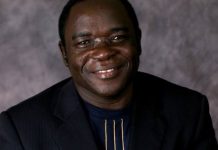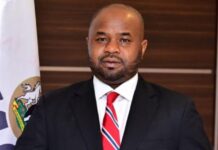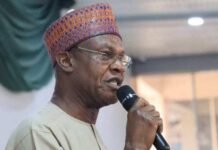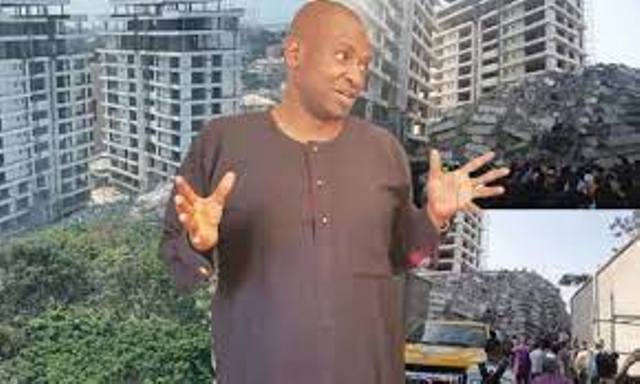Femi Macaulay
It was a tragic drama and a dramatic tragedy. A spectacular 21-storey giant had a great fall at Gerard Road, Ikoyi, Lagos, on November 1. The high-rise under construction in the highbrow neighbourhood was reduced to a lowly status.
Tragically, many people who were at the site, for one reason or another, died. The dead included the ambitious builder of the ambitious residential tower and CEO of Fourscore Homes, Femi Osibona. He was aged 55.
It is said that art imitates life. Life can also imitate art. News of the Ikoyi building collapse and the spotlight on Osibona brought to mind a play by the distinguished Norwegian playwright Henrik Ibsen titled The Master Builder, first published in 1892. Described as a play of “heightened ambiguities,” it is regarded as one of Ibsen’s “more significant and revealing works.”
Here is a synopsis of the play from Wikipedia: “Halvard Solness is a middle-aged master builder of a small town in Norway who has become a successful architect of some distinction and local reputation. One day while having a visit from his friend Doctor Herdal, Solness is visited by Hilda Wangel, a young woman of 23, whom Doctor Herdal recognises from a recent trip that he had taken. The doctor leaves, Solness is alone with Hilda, and she reminds him that they are not strangers – they had previously met in her home town 10 years ago when she was 13 years old.
“When Solness does not respond immediately, she reminds him that at one point during their encounter he had made advances to her, had offered her a romantic interlude, and promised her “a kingdom,” all of which she believed. He denies this. She gradually convinces him, however, that she can assist him with his household duties, and so he takes her into his home.
“Solness is also the manager of an architectural office in which he employs Knut Brovik, his son Ragnar Brovik, and Kaia Fosli. Kaia and Ragnar are romantically linked, and Ragnar has ambitions to become promoted in his architectural vocation, which Solness is reluctant to grant or support. Solness also has a complicated relationship with his wife Aline, and the two are revealed to have lost children some years ago as a result of a fire. During this time, Solness builds a closer tie with Hilda while she is in his home, and she supports his architectural vocation and new projects.
“During the construction of his most recent project which includes a towering steeple, Hilda learns that Solness suffers from acrophobia, a morbid fear of extreme heights, but nonetheless she encourages him to climb the steeple to the top at the public opening of the newly completed building. Solness, inspired by her words, achieves the top of the tower, when he suddenly loses his footing and crashes to his death on the ground before the spectators who have arrived for the opening of the new building. Among the spectators standing aghast at the sight, only Hilda comes forward as if in silent triumph. She waves her shawl and cries out with wild intensity “My—my Master Builder!”
Osibona’s life ended at the site of his building like that of the master builder in Ibsen’s play. In the play, the building did not collapse, but the builder fell to his death. Osibona’s building collapsed and killed him.
He had a grand architectural dream. The fallen tower was one of three towers, collectively known as 360 Degrees Towers. He painted a picture of the project in an interview with TVC about three months ago. “We are actually building a seven-star hotel,” he explained. “They are flats, but we make it feel like you are living in a seven-star hotel. Everything that is in a seven-star hotel, you will have there. But the only difference is that you own the property. We have not advertised and we have sold more than 50 per cent…Here in 360, we have security, exceptional view, offices, clubhouse, and open recreation area. Practically everything you have in a seven-star hotel.”
The project and the builder attracted attention in 2020 when it was reported that Osibona had tried to prevent officials of the Lagos State Building Control Agency (LASBCA) from sealing off the building in question. The agency was said to have observed some “anomalies.”
The agency’s general manager, Gbolahan Oki, was quoted as saying Osibona “got an approval for a 15-storey building and he exceeded his limit…and the materials he used are so inferior and terrible. The materials he used, the reinforcement, are so terrible. He got approval for 15 floors but built 21.” There is a controversy over the number of floors he got approval to build.
The claim that he was supposed to limit the towers to 15 storeys but went beyond the number raises questions not only about structural integrity but also the builder’s integrity. It is thought-provoking that Osibona in the television interview mentioned two cases in London that bordered on his company’s breach of building approval. According to him, in 1999 he had applied to build a two-storey extension. “The council wanted to write two-storey, they wrote three-storey. When we started developing it, neighbours went to report to the council because in London when an area is for two-storey buildings, you can’t do a three-storey,” he said. He added: “They made a mistake; they agreed that they made a mistake so I should not do the three storeys. I went on and did the three storeys.”
On another occasion, he had applied to build a six-storey structure. “Again the council made some mistakes; they wanted to write six-storey, they wrote seven-storey,” he said. These accounts are indeed intriguing. He claimed that the authorities made a mistake in two different cases, which he exploited.
He claimed to have worked successfully as a developer in London, Atlanta and South Africa, after his university education in England and “buying and selling shoes and suits” from 1991 to 1997. He had also executed some building projects after he returned to Nigeria, before he dreamed of his biggest work which eventually proved to be too big for him.
He was a hero in the country’s real estate development sector but the collapsed tower calls into question his heroism. Tragic heroes have tragic flaws. Osibona gave an insight into a possible flaw. He said: “When I first came to Nigeria, I believed in consultants. If an architect tells me something I’ll do whatever he tells me to do; if a structural engineer tells me something I’ll do whatever he tells me to do. It was later that I realised that these consultants only offer advice based on the book, they do not understand the practical aspects of the work.” Ironically, he was not a trained builder but saw himself as a master builder.
The state government’s investigation into the disaster is expected to unearth the immediate and remote causes, and prevent a recurrence.





























































